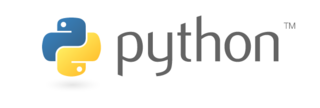Difference between revisions of "2009 Winter Project Week Python"
| (One intermediate revision by the same user not shown) | |||
| Line 8: | Line 8: | ||
===Key Investigators=== | ===Key Investigators=== | ||
| − | * Luca Antiga ( | + | * Luca Antiga (Mario Negri Institute) |
* Steve Piper (Isomics) | * Steve Piper (Isomics) | ||
* Demian Wasserman (INRIA) | * Demian Wasserman (INRIA) | ||
| Line 25: | Line 25: | ||
<h1>Approach, Plan</h1> | <h1>Approach, Plan</h1> | ||
| − | The Slicer Python interface now works well for both non-interactive and interactive modules. | + | The Slicer Python interface now works well for both non-interactive and interactive modules. |
| − | + | Interface has to be stabilized, and it is still lacking setting custom observers to vtkObject. | |
| − | + | Documentation has to be improved. | |
| − | + | Packaging Scipy is currently a problem. | |
| − | + | </div> | |
| − | + | <div style="width: 40%; float: left;"> | |
| − | + | <h1>Progress</h1> | |
| − | + | The Python interface is being adopted by several groups, both for command-line and interactive modules. The Numpy interface works well. | |
| − | + | A AddObserver method has been added to the wrapped vtkObject that accepts callbacks written in Python. | |
| − | + | The Python breakout session has illustrated the ways Python can be used in Slicer and the ways users can implement their own modules. Slides will be on the wiki in a few days. | |
| − | + | A --evalpython option has been added to the Slicer3 executable in order to run Python code in Slicer without starting the GUI (for batch processing) | |
| − | |||
| − | |||
| − | + | Packaging problems have been | |
</div> | </div> | ||
Latest revision as of 15:59, 9 January 2009
Home < 2009 Winter Project Week Python
Key Investigators
- Luca Antiga (Mario Negri Institute)
- Steve Piper (Isomics)
- Demian Wasserman (INRIA)
Objective
To finalize the implementation of the Slicer Python interface and solve packaging problems linked to Scipy.
Approach, Plan
The Slicer Python interface now works well for both non-interactive and interactive modules.
Interface has to be stabilized, and it is still lacking setting custom observers to vtkObject.
Documentation has to be improved.
Packaging Scipy is currently a problem.
Progress
The Python interface is being adopted by several groups, both for command-line and interactive modules. The Numpy interface works well.
A AddObserver method has been added to the wrapped vtkObject that accepts callbacks written in Python.
The Python breakout session has illustrated the ways Python can be used in Slicer and the ways users can implement their own modules. Slides will be on the wiki in a few days.
A --evalpython option has been added to the Slicer3 executable in order to run Python code in Slicer without starting the GUI (for batch processing)
Packaging problems have been
